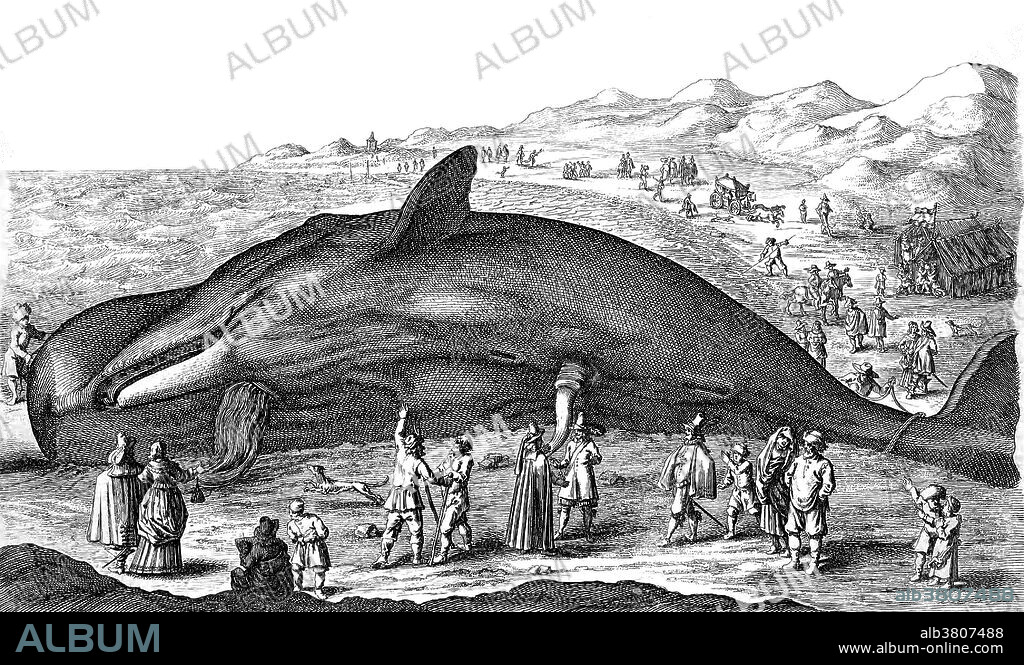alb3807488
Whaling, 17th Century

|
Add to another lightbox |
|
Add to another lightbox |



Buy this image.
Select the use:

Title:
Whaling, 17th Century
Caption:
Baleen whale. The baleen whales (Mysticeti), also called whalebone whales, comprise one of two suborders of the Cetacea (whales, dolphins, and porpoises). They are the edentulous whales, characterized by having baleen plates for filtering food from water, rather than teeth like in the toothed whales (Odontoceti). Whaling is the hunting of whales primarily for meat and oil. Its earliest forms date to at least 3000 BC. Various coastal communities have long histories of subsistence whaling and harvesting beached whales. Industrial whaling emerged with organized fleets in the 17th century; competitive national whaling industries in the 18th and 19th centuries; and the introduction of factory ships along with the concept of whale harvesting in the first half of the 20th century. As technology increased and demand for the resources remained, catches far exceeded the sustainable limit for whale stocks. In the late 1930s, more than 50,000 whales were killed annually and by the middle of the century whale stocks were not being replenished. In 1986, the International Whaling Commission (IWC) banned commercial whaling so that stocks might recover. Historiae naturalis by Joannes Jonstonus, 1657.
Category:
ILLUSTRATION • black & white • History: Early Modern
Credit:
Album / Science Source / Biodiversity Heritage Library
Releases:
Image size:
4200 x 2512 px | 30.2 MB
Print size:
35.6 x 21.3 cm | 14.0 x 8.4 in (300 dpi)
Keywords:
17TH CENTURY • ANIMAL • ANIMALIA • AQUATIC MAMMAL • ART • ARTWORK • BALAENA • BALAENIDAE • BALEEN WHALE • BEACHED • BLACK & WHITE • BW • CETACEA • CETACEAN • CHORDATA • CHORDATE • DRAWING • EDENTULOUS WHALE • ENGRAVING • FLEET • HISTORIC • HISTORICAL • HISTORY • HISTORY: EARLY MODERN • ILLUSTRATION • ILLUSTRATIONS • MAMMAL • MAMMALIA • MAMMALIAN • MAMMALS • MARINE MAMMAL • MARINE • MYSTICETI • NAVY • OCEAN DWELLING • OCEAN • OCEAN-DWELLING • OCEANS • SEA CREATURE • SEA DWELLING • SEA MAMMAL • SEA • SEA-DWELLING • SEA. • SEAS • VERTEBRATA • VERTEBRATE • WHALE • WHALEBONE WHALE • WHALERS • WHALING
 Pinterest
Pinterest Twitter
Twitter Facebook
Facebook Copy link
Copy link Email
Email
